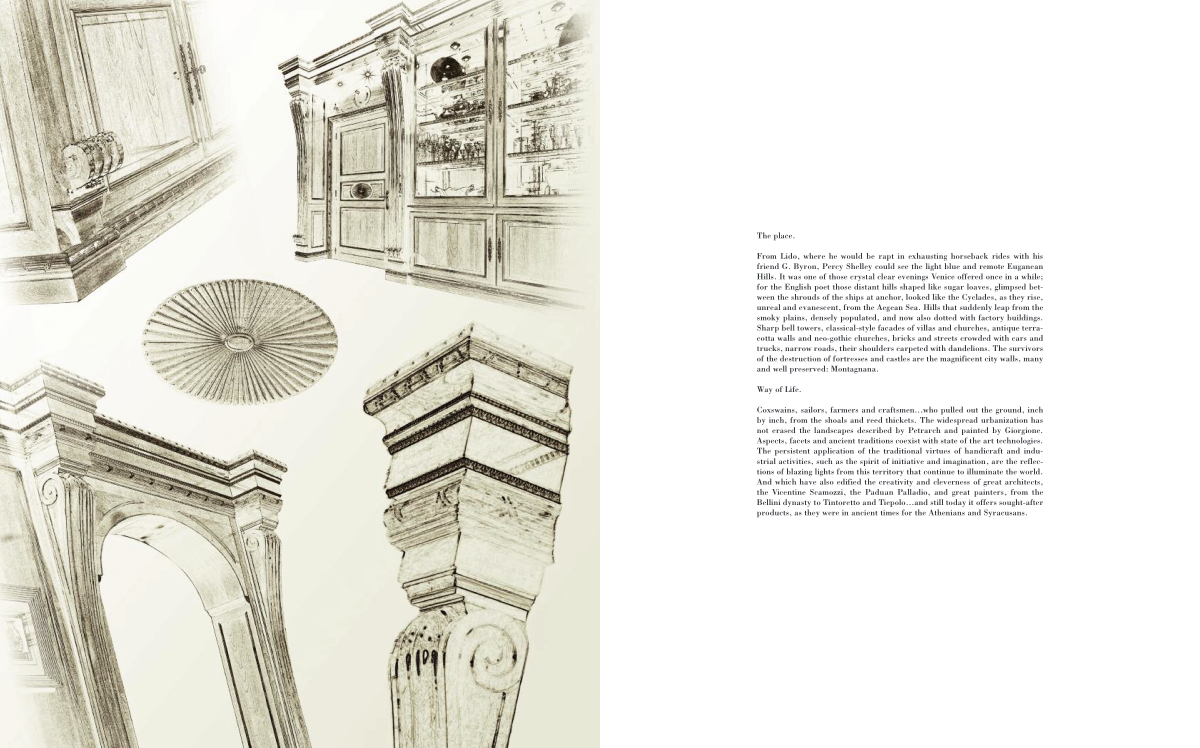The place.
From Lido, where he would be rapt in exhausting horseback rides with his
friend G. Byron, Percy Shelley could see the light blue and remote Euganean
Hills. It was one of those crystal clear evenings Venice offered once in a while;
for the English poet those distant hills shaped like sugar loaves, glimpsed bet-
ween the shrouds of the ships at anchor, looked like the Cyclades, as they rise,
unreal and evanescent, from the Aegean Sea. Hills that suddenly leap from the
smoky plains, densely populated, and now also dotted with factory buildings.
Sharp bell towers, classical-style facades of villas and churches, antique terra-
cotta walls and neo-gothic churches, bricks and streets crowded with cars and
trucks, narrow roads, their shoulders carpeted with dandelions. The survivors
of the destruction of fortresses and castles are the magnificent city walls, many
and well preserved: Montagnana.
Way of Life.
Coxswains, sailors, farmers and craftsmen...who pulled out the ground, inch
by inch, from the shoals and reed thickets. The widespread urbanization has
not erased the landscapes described by Petrarch and painted by Giorgione.
Aspects, facets and ancient traditions coexist with state of the art technologies.
The persistent application of the traditional virtues of handicraft and indu-
strial activities, such as the spirit of initiative and imagination, are the reflec-
tions of blazing lights from this territory that continue to illuminate the world.
And which have also edified the creativity and cleverness of great architects,
the Vicentine Scamozzi, the Paduan Palladio, and great painters, from the
Bellini dynasty to Tintoretto and Tiepolo…and still today it offers sought-after
products, as they were in ancient times for the Athenians and Syracusans.


